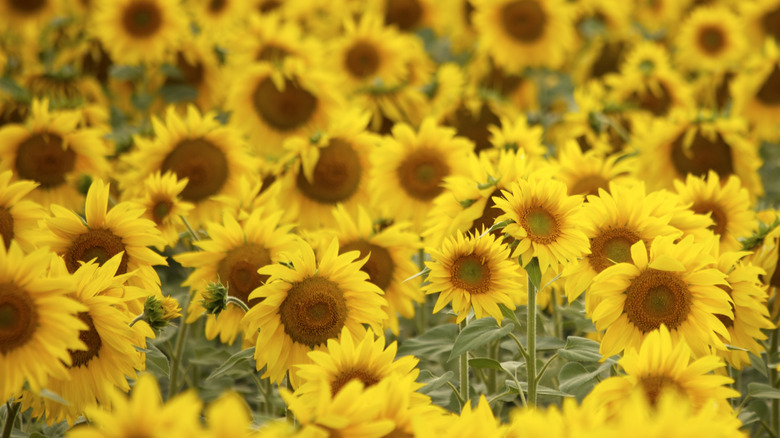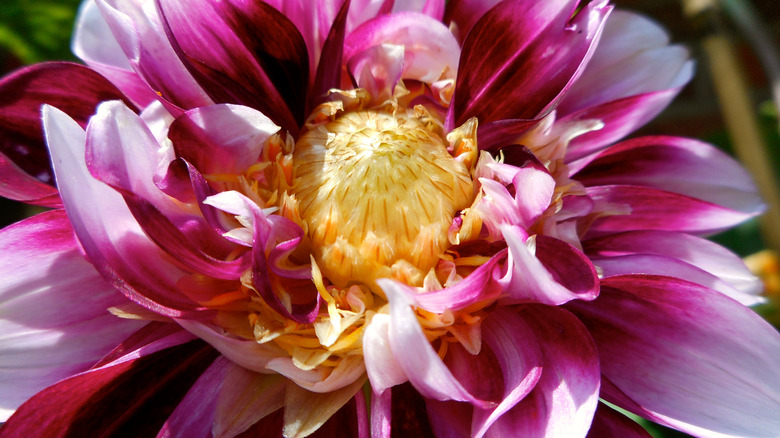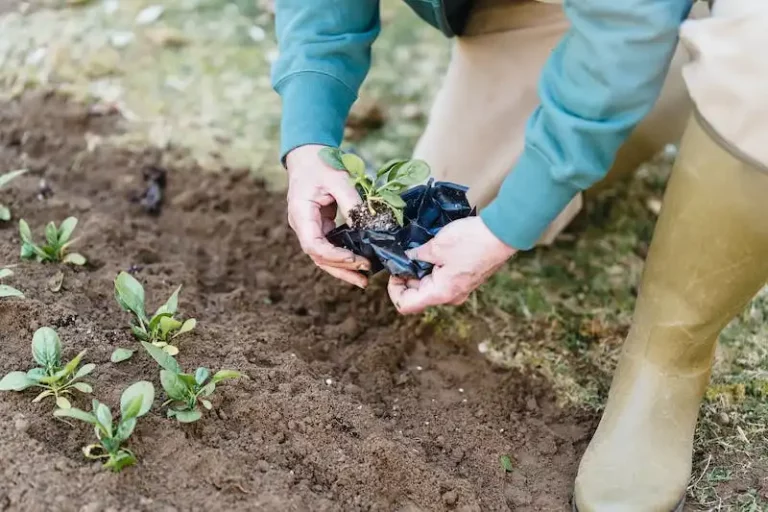As much as you may want to pair some of your favorite flowers in the garden together, sometimes the matchups just don’t seem to work. One plant may thrive while the other withers, growing so well that it crowds out its neighbor entirely. This can be frustrating, but there might actually be a scientific explanation for this phenomenon. It’s called allelopathy, and it’s the process by which certain plants protect themselves by producing biochemicals that can either inhibit or encourage the growth of other plants.
Two flower garden favorites that unfortunately will never grow well next to each other — despite looking gorgeous in a traditional cut bouquet — are sunflowers and dahlias, and it’s because of the sunflower’s natural allelopathic tendencies. In addition, the fact that these two flowers are in the same plant family means they attract a lot of the same pests and diseases. It’s for these two fundamental reasons that you may want to think twice before planting sunflowers and dahlias together.
Sunflowers and dahlias are both striking blooms, and because they’re in the same plant family, they both thrive in full sun and similar soil environments. It would seem like the two were natural companion plants, but that’s not the case. If you want both sunflowers and dahlias in your garden, you’re going to have to plant them far apart.
The suffocating sunflower

Most serious gardeners know the best practices surrounding alternating plant families in your soil year to year. What this means is that plants with similar characteristics — plants classified within the same family (like dahlias and sunflowers) — can’t be planted in the same plot in successive years because they attract the same pests and spread the same diseases, having a negative impact on the soil over time. However, not as many people are as familiar with the concept of allelopathy, particularly because allelopathic properties aren’t consistent across plant families. That is, not all allelopathic plants are in the same family, not all plants in a single family are allelopathic, and allelopathy may affect some plants in a family but not others.
In the case of sunflowers, they are extremely allelopathic, with every part of the plant producing biochemicals capable of suffocating or inhibiting the growth of neighboring plants. Not everything is susceptible to these biochemicals – impatiens and marigolds are excellent companion plants to sunflowers — but unfortunately, dahlias are. The allelopathic chemicals of sunflowers act as almost a dahlia-specific herbicide, preventing the growth of the normally abundant and brilliantly diverse dahlia flower. Try mixing your dahlias with zinnias or lilies instead.
Shared pests and diseases

Dahlias and sunflowers are both members of the Asteraceae plant family, and therefore often attract the same garden pests. Spider mites and aphids are some of the most common pests of Asteraceae flowers, destroying foliage, sucking away vital sap, and transmitting diseases. Both are tiny as well but multiply at terrifying rates, and often the signs of their presence — like curled or yellowed leaves — are only clear when an infestation is well underway. Since these pests are attracted to both dahlias and sunflowers, having them next to each other in the garden may appear like an all-you-can-eat buffet, creating a much bigger and more devastating outbreak.
Likewise, sunflowers and dahlias also are susceptible to the same types of diseases. Fungal growths such as Botrytis Blight, leaf spots, rusts, and powdery mildew are all common on the leaves and petals of these flowers and can quickly spread among susceptible species, destroying entire crops in their wake. Even if the disease is identified before it veers out of control, already infected stems will likely have to be removed entirely to keep it from spreading further. A preventative measure many gardeners use against the spread of such harmful afflictions, however, is simply not planting similarly affected plants next to one another in their flower beds, which means sunflowers and dahlias are poor bedfellows.




